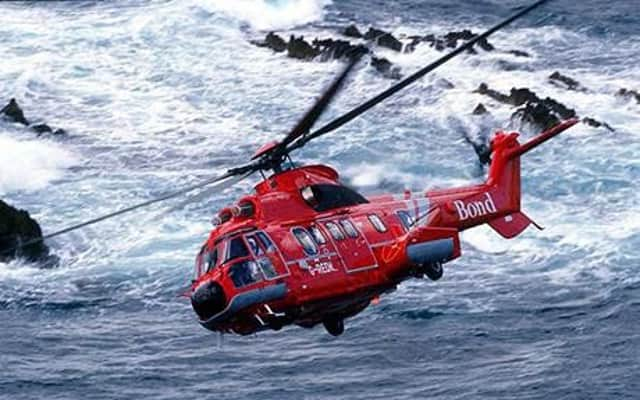Super Puma helicopter crash victims stood no chance


Two pilots and 14 oil workers died when the helicopter suffered a catastrophic gearbox failure off the coast of Peterhead.
An inquiry is currently being held to establish the cause of the men’s deaths at the Town House in Aberdeen.
Advertisement
Hide AdAdvertisement
Hide AdYesterday the inquiry heard that pilot Paul Burnham, 31, from Methlick, north of Aberdeen, and co-pilot Richard Menzies, 24, from Droitwich Spa in Worcestershire, could do nothing to prevent the accident when the gearbox failed.
Giving evidence, Air Accidents Investigation Branch (AAIB) senior operations investigator Timothy Atkinson said the flying height and rapid deterioration of the gearbox meant the accident was impossible to survive.
He said: “From the moment the gearbox began to fail catastrophically, there was nothing whatsoever they [the crew] could do.
“I’m sorry to say there is no doubt whatsoever that this event was not survivable for those on board.
“The remarkable thing on that day was how good the conditions were. It was a very good day for flying.”
Mr Atkinson said that a manoeuvre known as a “hover taxi” – a slow flight at a severely reduced height of around 10ft – would have provided those on board with the best chance of survival.
However, the gearbox deteriorated rapidly in the minutes before the crash.
Crewman Lidvar Olav Hildrey watched from the deck of the offshore vessel Normand Aurora as the Super Puma aircraft plunged into the sea. Mr Atkinson flew out to the ship to interview Mr Hildrey in the days after the tragedy.
Advertisement
Hide AdAdvertisement
Hide Ad“His recollection was very clear. His attention was drawn to the helicopter. He saw it falling in an arc. He remembered seeing a brief flash of fire and smoke,” said Mr Atkinson.
“Separately, he saw the rotor blades, still joined at the hub, also falling into the sea.”
Mr Hildrey’s account helped investigators determine from an early stage that there had been an “inflight structural break-up” rather than an accident involving an intact aircraft.
In the wake of the accident, the AAIB recommended that a warning light be installed in the cockpit of the AS332-L2 variant to show detections of particles in the gearbox which may warn of similar problems.
Mr Atkinson said had this warning system been in place, then the aircraft may have been taken out of service prior to the accident.
But he conceded that such a warning light would not have given the crew time to change their actions on 1 April when the gearbox suffered a catastrophic and rapid deterioration.
The inquiry continues next week.